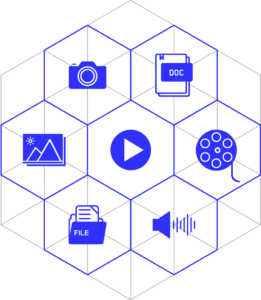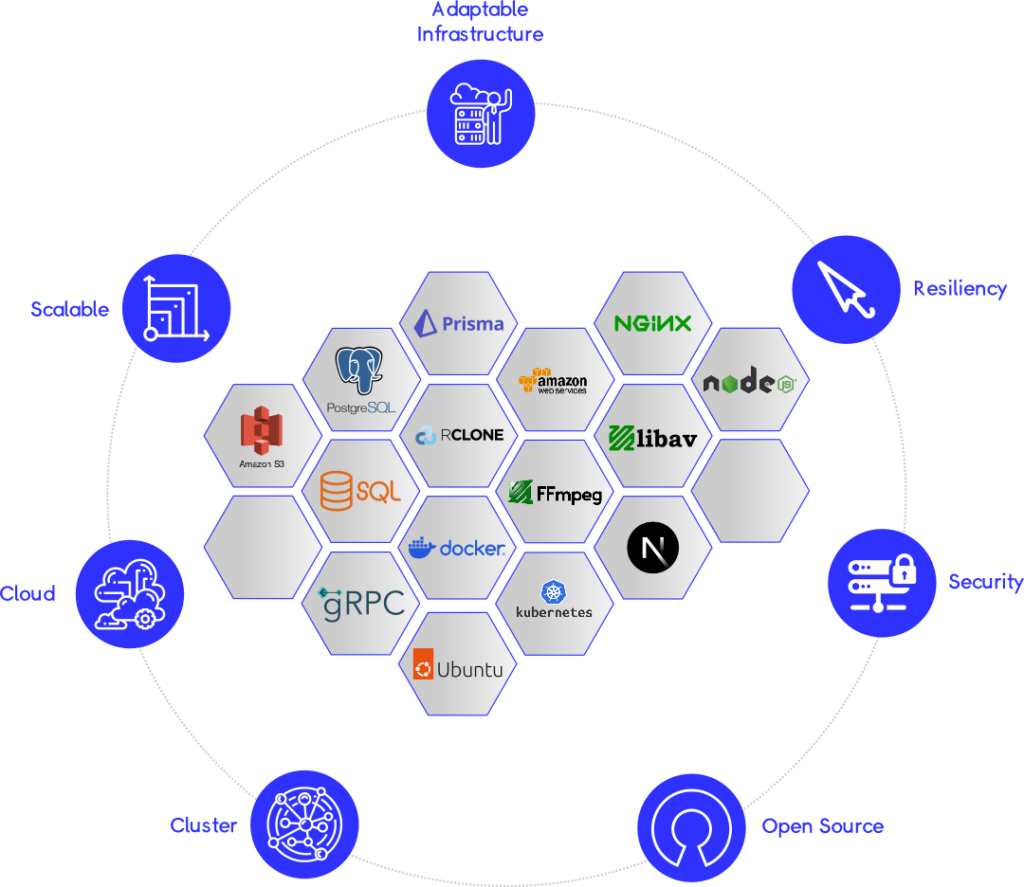Art.c.HIVE is a system designed to provide a solution tailored for the current and future needs for archiving and preserving digital files in the art world. An integrated system that combines archiving, preservation, and fruition for the public and professionals, developed from scratch using today’s methodologies and technologies.
Archiving is not about collecting data, but about telling the Story.
Compatibility and Interoperability with Italian and International Cataloguing Systems
Art.c.HIVE was created to be interoperable with catalographic systems in use within Italian and international institutions. The starting reference was the Italian Ministerial Documentation OAC (Works of Contemporary Art) published on the website of the Central Institute for Catalogue and Documentation. The reference has then been the guidelines of the Moving Image Cataloguing Manual published by the International Federation of Film Archives in 2015 and in use by the major archival institutions related to the audiovisual world, in Italy and internationally; as well as the guidelines of the Digitizing Contemporary Art (DCA) project, which compares various models and gives very useful indications not only on cataloguing, but also in reference to the protocols of digitization and archiving of contemporary artworks, audiovisuals and related documentation.
All-in-one Management: Database, Preservation System and File Storage.
contemporary art
=
complex artworks
Archiving and Cataloguing Complex Works
Art.c.HIVE is designed not only to catalogue works, but also exhibitions, lectures, artist interviews, live events, and complex artworks. The system is designed to relate these different entities in a network structure; thus an exhibition will be connected to the artworks it hosted, a conference to the mentioned works, and so on. With this system of reference to a complex artworks which may include components of different kinds, it is possible to catalogue each individual component and then relate them, as well as to keep track of variants and versions that may arise from subsequent arrangements.
Modularity, flexibility and Open Source
Art.c.HIVE core is Open Source system.
The Art.c.HIVE core is entirely designed with Open Source tools. The use of Open Source software makes it possible not to depend on proprietary programs and systems, which are more limiting, burdensome and restrain the evolution of the system itself as well as the possibilities of future development. With Open Source, any kind of execution and modification can easily be done straight-away, allowing a flexible development for future needs and implementations. Moreover, an Open Source based system has a life span and validity over the medium to long term, 15-20 years, and benefits from the many community security updates.
Modularity and Flexibility of the System
Each institution has unique structural, logistical and economic needs, which is why the Art.c.HIVE system is designed to offer maximum modularity and flexibility at different levels: application, storage and usability. Data entry methods and media digitization procedures are future proof and optimized according to current standards regarding the storage solution and distribution. This allows costs to be contained and content to be distributed through different channels and modality. The software infrastructure is at the service of art to enhance culture and promote education.
Art.c.HIVE is






